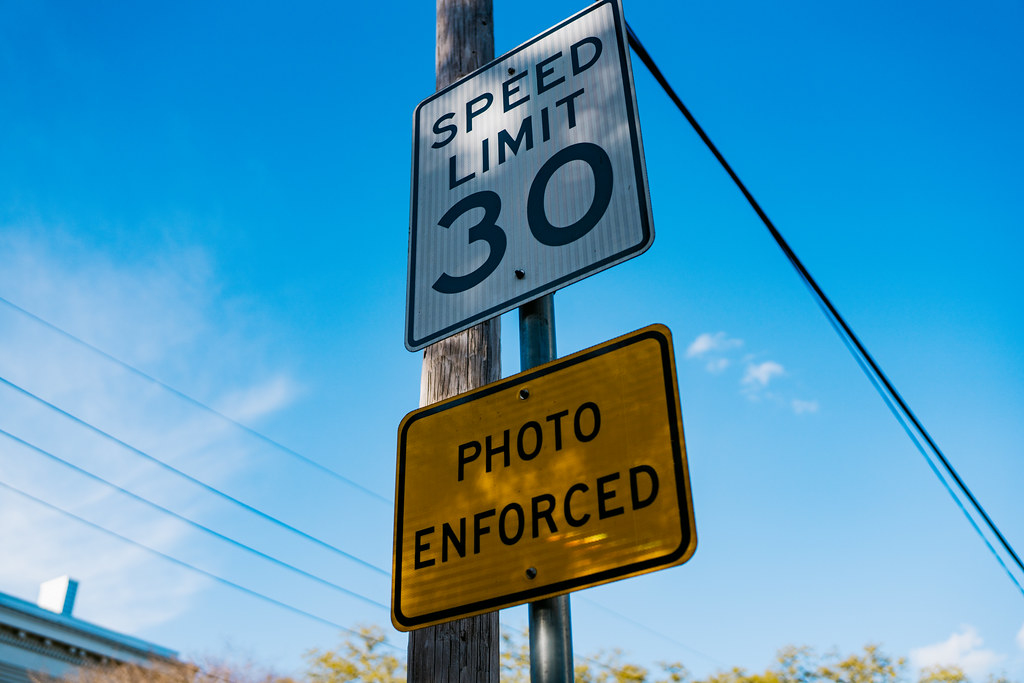If you’re a driver in California, you’ve likely heard buzz about a new law that’s changing the rules of the road. As of 2025, Assembly Bill 645 (AB 645) has officially rolled out, introducing automated speed cameras to some of the state’s busiest cities. For the first time, getting a speeding ticket might not come from a police officer, but from a camera that clocks your speed and sends a violation notice straight to your mailbox.
This new system is a major shift in traffic enforcement. This guide will break down exactly what AB 645 is, where it’s being implemented, how the fines work, and what it means for your driving record.

What is AB 645 in Simple Terms?
AB 645 is a five-year pilot program that authorizes specific California cities to use automated camera systems to enforce speed limits. These cameras are placed in designated areas—primarily school zones, high-injury networks (streets with a history of severe crashes), and areas known for street racing—to automatically ticket vehicles exceeding the speed limit by 11 mph or more.
The goal, according to lawmakers, is to reduce traffic fatalities and serious injuries by deterring dangerous speeding. The program is managed by each city’s transportation department, not the police.
Which Cities Are Part of the AB 645 Pilot Program?
The initial rollout includes six major California cities:
- San Francisco.
- Los Angeles.
- Oakland.
- San Jose.
- Glendale.
- Long Beach.
San Francisco became the first city to begin installing its 33 cameras in early 2025. The other cities are in various stages of planning and implementation, with systems expected to go live throughout 2025 and 2026. Each city is required to conduct a 30-day public information campaign before the cameras are activated.
When Do Fines Start? The 60-Day Warning Period
One of the most important things for drivers to know is that there is a built-in grace period. For the first 60 calendar days after a new camera system is activated, drivers who are caught speeding will only receive a warning notice in the mail.
⚠️ Warning period starts June 6 📸 Citations begin August 5
After this 60-day warning period, the system will begin issuing actual notices of violation, which carry a financial penalty.
How Much Are the Fines? A Look at the Tiered Structure
Unlike traditional speeding tickets, which can come with hefty fees and court costs, the fines under AB 645 are structured as civil penalties. The cost is based on how fast you were going over the speed limit:
- 11-15 mph over the limit: $50
- 16-25 mph over the limit: $100
- 26-99 mph over the limit: $200
- 100 mph or more over the limit: $500
The law also includes provisions for low-income individuals, who may be eligible for an 80% fine reduction or can opt for community service.
Key Questions Answered: License Points and Public Records
This is where the new law differs significantly from a traditional traffic stop.
- Do AB 645 tickets add points to your license? No. A violation from a speed safety camera is treated like a parking ticket. It is a civil penalty issued to the registered owner of the vehicle and does not add any violation points to your driving record.
- Are these tickets public record? The photographic records and data collected are confidential and can only be used for administering the program. They are not available to the general public or other government agencies for unrelated purposes, such as immigration enforcement.
The Smartest Defense is Prevention
While the fines may seem less severe than a typical ticket, they can still add up. Memorizing camera locations is nearly impossible, especially since they can be moved and new ones can be added.
The most effective way to avoid these new fines is to be aware of your speed in real-time. This is where technology can help.
The best way to avoid these new fines is with real-time alerts. Download TicketGuard for free.
Our app, TicketGuard, is designed for exactly this challenge. It runs quietly in the background, providing you with clear, hands-free voice and visual alerts when you approach a known speed camera, red-light camera, or police trap. It’s mapless, requires no mobile data to function, and works seamlessly alongside your favorite navigation app like Google Maps or Waze.
As California enters this new era of automated enforcement, don’t leave yourself guessing. Drive with confidence, knowing you have a reliable co-pilot looking out for you.
Download TicketGuard:
